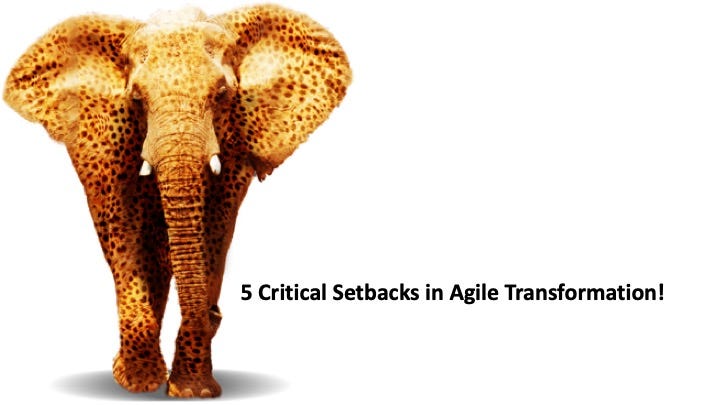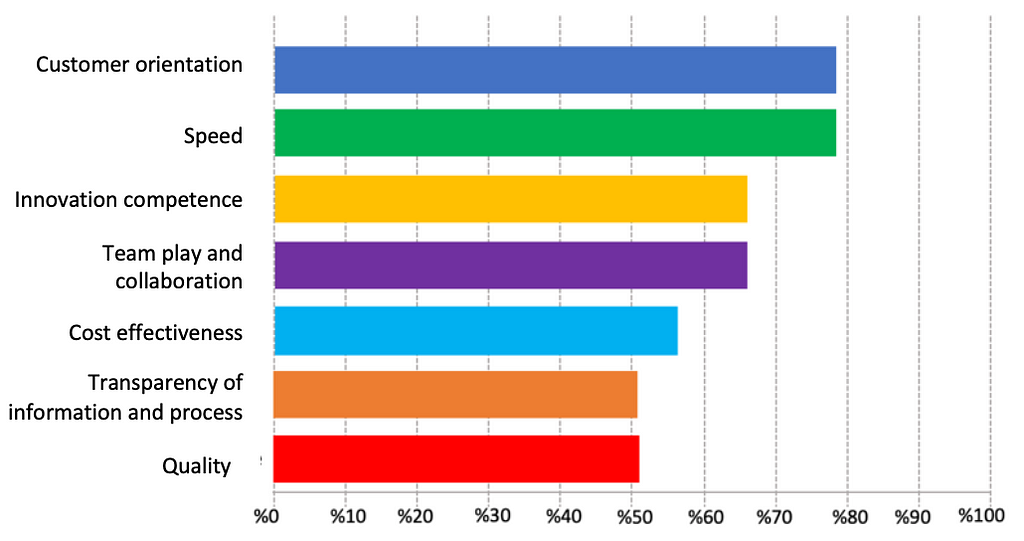Latest news about Bitcoin and all cryptocurrencies. Your daily crypto news habit.
By: Professional Scrum Trainer Mehmet Yitmen, Scrum.org
We have been experiencing a radical change in terms of market dynamics and economic models for the last few decades. In fact, we are shifting from a world where giant companies are kings to a world where clients are kings, in other words, from a production-oriented world to a new service-based world. This radical and great change also affects the company structures and ways of doing business. Today, companies are trying to pull away from the old concept of the huge, pyramid organization dominated by hierarchy and bureaucracy which was the norm in the 20th century. If I may open this up a bit, I can say that the functionally organized institutions that take advantage of the economies of scale are now divided into many small ‘start-ups’ that are focused on fast value production, independent of each other but able to work together. In summary, we are leaving behind the old organizations that look like the Titanic. Instead, we have entered the era of companies which consist of many large and small boats and can move faster and more flexibly, namely “The Age of Agile” as Steve Denning calls it.
However, this is not an easy transformation. So much so that, when we compare the old business model and organizational structure to the agile approach, it is almost impossible to find something in common between the two. Therefore, this transformation process is a challenging and error-prone journey. In order not to repeat the same mistakes, let us look at the 5 basic setbacks that we encounter and practical solution proposals.
In order to have a successful transformation, we need to start by answering this question first: ‘why to transform?’. As I mentioned, transformation is a long journey. You should clearly determine the goal you are aiming to achieve with the transformation efforts so that you do not depart from your goal in this journey. You should also create a common ground for everyone to understand this goal within the company. With the excitement of the wind of change, you may assume that everyone is on common ground and harmonization may be missed out.
For example, let me tell you about a study I have done with about 20 top executives of a global company that serves in the European region. When I asked them which ‘3 main’ subjects they wanted to improve within a year with the agile transformation journey they were carrying out, I had the following results:
As it is seen in this example, it will not be easy to obtain the desired results in a transformation study where different managers have different goals and priorities. Especially if we are talking about a radical transformation journey, it will be very difficult to even make a progress. Therefore, based on this example, improvement in 7 areas mentioned above can be the ultimate goal. However, it is important to tackle two or three areas at the most to reach this ultimate goal step by step, and to agree on this priority. Otherwise, this disharmony in management-level goals could lead to a greater ambiguity in the rest of the company.
Establish a guiding coalition that will start the transformation studies and lead it up to a certain point. This coalition should determine the transformation vision, lead the strategic steps towards this vision, provide guidance to the organization for the implementation of transformation efforts, and increase the visibility of all these studies.
Speaking of the guiding coalition, I suggest you read John Kotter’s “Our Iceberg is Melting”.
Agility is a culture transformation that is far more than just a set of practices to be applied at the team level. It means that the company’s entire way of working evolves into a whole new form. An important part of this is the process of managers’ transformation into next-generation servant leaders, leaving their old chain of command understanding and practices. In companies that go through the agility process, the management should start to change its own behaviors first and should set an example. Otherwise, there will be a serious tension between the teams that adopt the agile practices and those who are still using the old practices. As this tension builds up, it will seriously harm the transformation and will set back the evolution process.
According to the research conducted by AgileTurkey.org in Turkey in 2018, the two biggest obstacles to agile transformation were found out to be the resistance to transformation and culture transformation. Current managers have a lot to do in order to cope with these two major challenges and turn into an Agile company. Managers should be part of the transformation starting from themselves, their daily behavior, and should guide the whole company by supporting the process.
Focus on training and coaching studies at the management level for your managers to abandon their old and traditional management habits and become the next generation Agile leaders. Start transformation studies not only by focusing on your teams, but also the management.
When was the last time you made a radical change about yourself? How long did this change take? People whom I ask these questions usually think for a while and then tell me that their last experience was years ago. So, perhaps for many of us, radical changes are not something that we are accustomed to in our lives or that we easily accomplish. This is the case with individuals. Imagine how long it will take to achieve a radical cultural transformation in an organization that has adopted a certain stance and habits over the years and has hundreds or thousands of employees.
As I mentioned previously, there may be situations where the management does not include itself in the process and forces the team to be ‘Agile’ as soon as possible. However, this rush only causes you to create teams that appear to be ‘Agile’ and create problems in the medium term. So, you end up with an elephant pretending to be a cheetah-like the one in the picture I shared at the beginning of this article. Furthermore, the dyes on the elephant can only withstand a few storms.
Thus, start by acknowledging that you started a challenging and long-lasting journey, that you will take radical actions, and that it will take time. Remember, you will make some mistakes in this complex transformation process and you will learn from them and change direction from time to time. Therefore, it is good to be open to mistakes from the beginning. Remember, experimentation is one of the most important values of being agile.
In order to accelerate and advance in the medium term, one must start slowly. Start a transformation in a strategically important but relatively small part of the organization. Following your experiences here, extend the transformation studies to the entire organization.
In addition to establishing a guiding coalition I mentioned in the first title, it is important to ensure that the transformation is widespread and that there is a wide participation in the transformation efforts. Otherwise, what starts like a rapid fire under the leadership of a powerful guiding team cannot be more than a new approach adopted by a small visionary group. Or even if it can, it will not be resistant to storms because it will not be internalized and fully absorbed. To spread the fire, there must be strong winds (I’m talking about the guiding coalition) as well as sparks on the ground at different points. In summary, the transformation must proceed collaterally in both directions, not top-down or bottom-up.
Change has always been painful. The reason for this is that it usually contains many uncertainties, which is quite normal. These uncertainties trigger concerns and fears within the organization. At this point, the most effective method is to ensure that all experiences within the organization can be shared openly. Let your teams or people share how they see this change, how they experience it, share their good practices and discuss among themselves. This transparency will lead to adoption and improvement. Support them with tools (authority, time, money, etc.) so that they can solve problems on their own.
Let me tell you an interesting experience I had in a company I worked with. Usually, it is very difficult to trigger knowledge and experience sharing and create a community culture within a company. Or these sharing processes begin as a well-intentioned and constructive initiative, but they don’t last long. There are several reasons for this; the content may not be satisfying, there may be a small number of participants, the problems revealed may not be addressed. Though, the first few stories may need to be guided or supported in terms of content to set an example. However, it may still not be possible to establish adoption and ensure that stories continue on their own accord. At this point, we took advantage of “fame” to make these sharing platforms more attractive, getting inspiration from Andy Warhol’s words “In the future, everyone will be world-famous for 15 minutes”. In fact, what we did was pretty simple; we published interesting announcement communication tools, which consisted of the pictures of the person or team that will share something. This simple transparency has aroused curiosity within the company and paved the way for many people to say, “I have something to say too”. This sharing platform has been going on for three years and it still continues.
Create internal competency-based and/or practice-oriented communities. Invest in these communities to make them functional and sustainable. Authorize these communities to be part of the transformation. Thus, you can have an organization where people not only share something but also take actions.
“Agile” is a brand-new way of working. Therefore, both your leaders and teams will need a lot of support along the way. For this support, select volunteer and competent people who are interested in Agile practices and want to be part of this transformation journey. Support their personal development as transformation agents. These transformation agents, your internal Agile Coaches, will play a critical role in implementing the agile practices properly and turning this new way of working into a permanent culture as the transformation of your organization accelerates and expands.
Consider the role of Agile Coach as your accelerator that enables your organization to achieve autonomy and derive the maximum benefit from it; as well as enabling this new structure to transform into maximum employee happiness and business value production. It is normal for your old reflexes, your point of view, and your old ways to come to the surface many times in the transformation journey. When you encounter difficulties, you will need the guidance of your Agile Coaches very much to avoid going back.
Begin by setting up a small Agile Coach community consisting of experienced and eager people in your organization like Agile team members, Scrum Master, and Product Owner. Train and guide this community with the support of outside experts. At least some of them will be your successful agents of internal transformation in the future.
Originally published at https://www.scrum.org.
5 Critical Setbacks in Agile Transformation was originally published in Hacker Noon on Medium, where people are continuing the conversation by highlighting and responding to this story.
Disclaimer
The views and opinions expressed in this article are solely those of the authors and do not reflect the views of Bitcoin Insider. Every investment and trading move involves risk - this is especially true for cryptocurrencies given their volatility. We strongly advise our readers to conduct their own research when making a decision.

